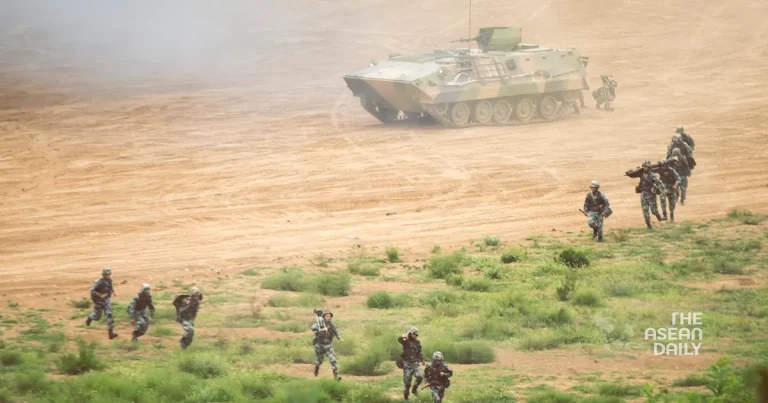26-8-2024 (BEIJING) The People’s Liberation Army (PLA) of China is set to conduct a three-day live-fire exercise along its border with Myanmar, commencing Tuesday. This announcement, made by the Yunnan provincial government, comes as tensions escalate on multiple fronts within Myanmar.
The drill area encompasses several key locations in Yunnan province, including Ruili city, and areas near Huyi and Wanting townships. It also extends to Zhenkang county near Mengdui township, and the autonomous county of Gengma Dai and Wa near Mengding town.
Whilst the provincial government has issued traffic control regulations for the defined area, it appears that access has not been completely restricted. This measured approach suggests a balance between military necessity and civilian convenience.
The Southern Theatre Command of the PLA had earlier announced that troops would be deployed to Ruili and Zhenkang for “border armed patrols and air-to-ground joint patrols”. The stated objective is to evaluate the rapid mobility, three-dimensional containment, and joint combat capabilities of the theatre troops, with the overarching aim of maintaining border stability.
This military exercise unfolds against a backdrop of intensifying conflict within Myanmar. The country’s military government recently extended its state of emergency by six months, a move indicative of its struggle to maintain control.
PLA commentator Song Zhongping suggests that the drill is a preventative measure, designed to insulate China from potential spillover effects of Myanmar’s civil war. The northern Shan state of Myanmar, which shares a border with China, has been a focal point of unrest. Since October, a coalition of rebel militias known as the Three Brotherhood Alliance has been leading strikes in the area, presenting a significant challenge to the military junta that seized power in 2021.
The drill also serves as a response to a January incident where shelling from across the border injured five people in Yunnan’s Nansan town. This event prompted Beijing to issue a stern call for a ceasefire in Myanmar.
China’s concerns extend beyond immediate border security. As Song points out, China has substantial investments in Myanmar that could be jeopardised by domestic conflict. These include the China-Myanmar economic corridor and other mega-projects that form part of China’s broader regional economic strategy.
Furthermore, Myanmar plays a crucial role in China’s ambitions for direct access to the Indian Ocean, as Beijing seeks to reduce its dependence on the Strait of Malacca for oil imports.
Retired PLA senior colonel Zhou Bo emphasises China’s dual approach: opposing any spillover of conflict into Chinese territory while simultaneously attempting to act as a peace broker. However, these efforts have faced setbacks, with a China-brokered ceasefire collapsing in June.
Despite these challenges, China continues its diplomatic efforts. Foreign Minister Wang Yi’s recent visit to Myanmar represents a renewed attempt to mediate between the ruling junta and rebel groups.
This is not the first time China has conducted such exercises in response to the Myanmar situation. Similar drills were held in April as security concerns grew, with the PLA Daily stating that the Chinese army would take “all necessary measures” to ensure the safety of its people.




